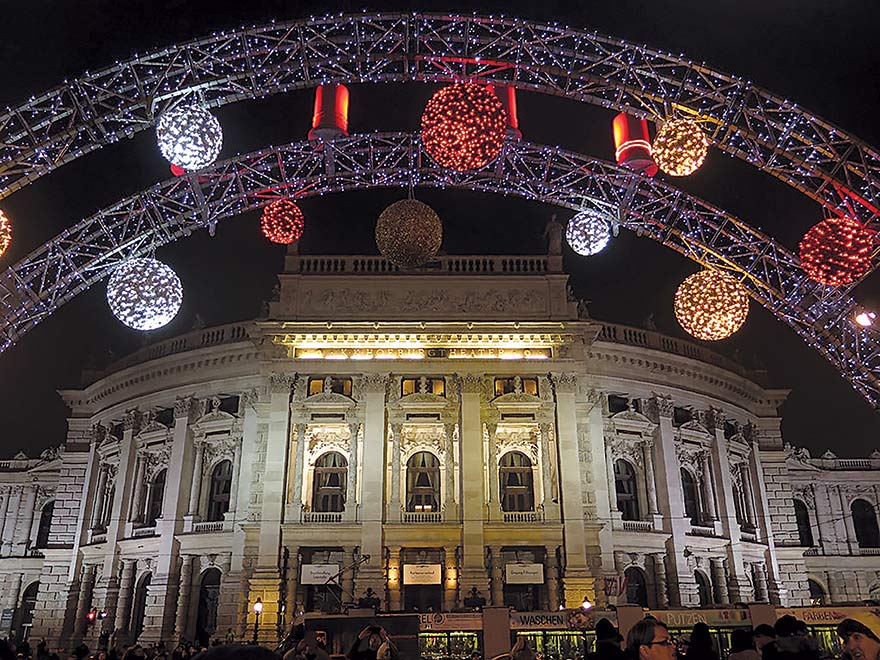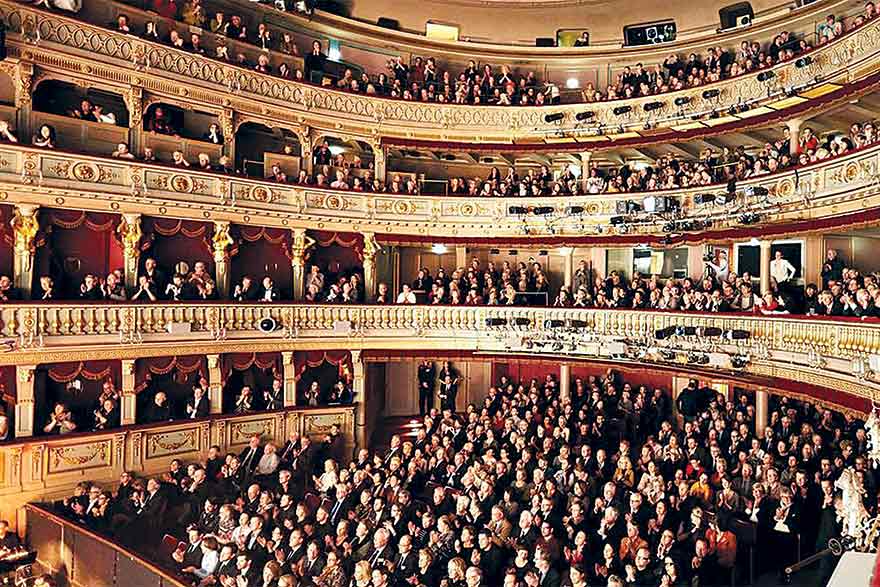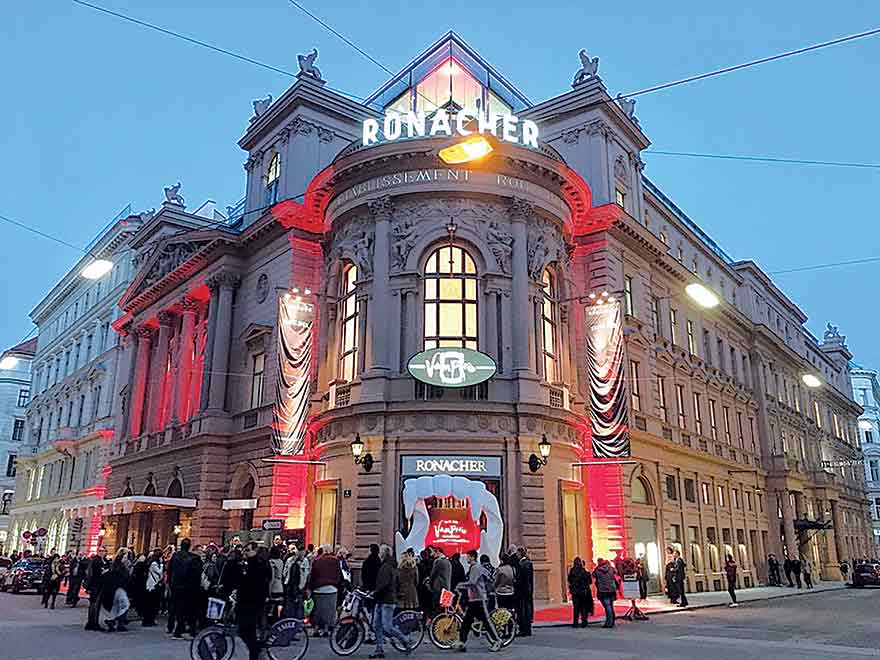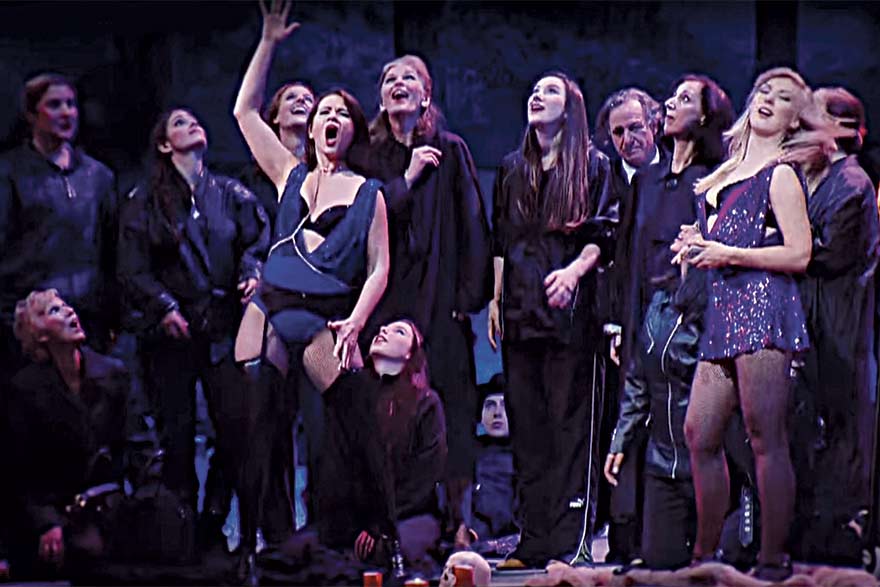In Austria there were 6.09 million tickets sold for more than 15,000 theatre performances in the 2014/2015 season. With just over 8.5 million inhabitants, this is categorical evidence of Austria’s obsession with the theatre. The great theatres of Vienna sold more than 3.8 million tickets, with a population of just 1.8 million inhabitants, while in 2016 the Republic of Austria gave impressive funding of €200 million to its theatres
It’s no surprise that Austria incorporates all forms of theatres in its national repertoire; everything from the internationally renowned National Theatre to countless cabarets, intimate cellar theatres, along with an array of independent artists’ performances occurring on professional or impromptu stages. With regard to large theatre institutions, there are state, regional, municipal and private theatres, which together employ a combined total of more than 5,000 actors, directors and administrative staff that work almost year-round to put on acclaimed works. The terms for these different theatrical institutions have developed historically, and allude to the financial structure behind them.
Some of the most recognisable names in the imperial branch of theatre include the world-renowned Wiener Staatsoper, the Volksoper and the Burgtheater, which is the second oldest theatre in Europe. In 1999, the Austrian Parliament passed the Federal Theatres Organisation Act, which required state theatres to be removed from the federal administration. This resulted in the creation of the Bundestheater-Holding company (Federal Theatres Holding).

The Bundestheater-Holding group is owned by the Republic of Austria and tasked with facilitating contact between its four subsidiaries and political players in the field of culture, the business community and the public. This holding company is additionally responsible for the strategic management and operations of its subsidiaries. This includes everything from financial and legal support, to contract handling and the upkeep of historical theatre buildings. In addition to three independent theatres (Wiener Staatsoper, Volksoper, Burgtheater – all located in Vienna), the Bundestheater Holding also incorporates an association called “ART FOR ART,” which provides creative shops and services in ticketing, building management and IT.
With a budget of €246.2 million and 2,400 employees, Bundestheater-Holding is the largest theatre corporation in the world. Its three member theatres attract an impressive 1.3 million visitors every year. Lending such comprehensive support in business management to its subsidiaries, the Bundestheater-Holding allows its theatres to focus on the core of their work: creating high-quality theatre productions.
The capital’s budget for culture amounts to 84 million euros, which far exceeds the rest of the federal states. Its main three theatres alone attract more than 1.3 million people a year. Vienna has more than 90 theatres and an estimated 500 independent theatre groups
The second category of theatres includes regional and municipal theatres, which are the main stages in the federal states and its cities, respectively. Federal states also have holding companies, such as the Vereinigte Bühnen in Vienna, which comprises the Theater an der Wien, the Ronacher and the Raimund Theater. These three theatres primarily offer different forms of musical theatre in its three venues with 1,070, 1,040, and 1,255 seats respectively.
With a combined 644 performances annually, the Vereinigte Bühnen reaches a sizeable audience of lovers of musicals. In the Styrian province, which is home to Austria’s second largest city, Graz, company Theater Holding Steiermark unites the opera house (including the ballet), the municipal theatre and the children’s theatre, and is financed 50/50 by the state and the City.

Eight out of the nine federal states have a regional or municipal theatre, most of which are former court theatres dating back to the 18th and 19th centuries (Court theatres used to be funded and managed by the court, as opposed to the people’s theatres, which were privately funded and publicly accessible). More often than not, they are so-called “multi-branch” theatres, which usually comprise opera, drama, ballet and children’s theatre. They are primarily financed by the federal state and local municipality.
These theatres are part of the Society of Theatres of the Austrian Federal States and Municipalities. Its purpose is to protect the interests of its members, as well as to propose how to divide federal government funding of €18.7 million over the course of a five-year period. Its members, which include the Salzburger Landestheater, Oper Graz, Tiroler Landestheater and Stadttheater Klagenfurt, offer more than 3,000 performances a year to over a million spectators. In total, these theatres receive collective subsidies of €136 million.
Europe’s municipal theatres flourished in the 19thcentury and inspired architects Fellner & Helmer to specialise in representative buildings for municipal theatres, which they erected in various cities across Central and Eastern Europe. In Austria alone, they designed the opera house in Graz, Landestheater Salzburg, Stadttheater Baden bei Wien, Stadttheater Klagenfurt, Akadmietheater (part of the Burgtheater), Konzerthaus, Ronacher and the Volkstheater in Vienna.
One of the most highly respected and popular types is the socio-politically charged cabaret genre. The most renowned stage is the Kabarett Simpl, the only cabaret dating back to the 19th century that is still open today
In a third category, there are so-called private theatres, such as the Volkstheater, the Theater in der Josefstadt and the Theater der Jugend. They collectively stage more than 1,500 performances a year for more than 600,000 spectators. Broadly speaking, the Volkstheater offers more innovative approaches to critical spectators, while the Theater in der Josefstadt caters to a more conservative and traditional audience. Meanwhile, the Theater der Jugend shows ambitious literature for young people.
The private theatres were originally founded by benefactors as an antithesis to the court theatre. However, today their money no longer comes from private benefactors, but rather from the municipality and the federal government (approximately 60% and 40% respectively), which effectively renders the term ‘private theatre’ obsolete in Austria. From a legal perspective, private theatres have been transformed from private corporate entities into foundations, associations or limited liability companies.

Given that the majority of funding for these theatres comes from the federal government and the municipality, artistic directors are nominated by the culture secretary and the city councillor for cultural affairs. One of the major benefits of having these private theatres registered as limited liability companies is that, legally, the artistic and managing directors are entitled to make independent decisions. Indeed, the Volkstheater’s strong financial position, coupled with vast managerial and artistic independence, is a privilege that would be the envy of most theatres around the world.
However, the seemingly ideal Austrian theatre system comes with understated flaws. Subsidies for theatre institutions remain the same every year, while fixed outgoings – such as rent, electricity bills or fees and salaries – increase every year. Each theatre has to cover this gap in costs with money from their own pocket, usually through ticket sales. However, most of them already reach a high percentage of seats sold. Theatres must therefore come up with new ways of generating money—which can easily become a distraction from fulfilling the actual purpose of their existence.
Furthermore, competition among theatres is big, especially in the capital, and relations amongst them, as well as with political stakeholders, requires careful handling. Subtle ambiguity and scheming happen of course, like anywhere else, inhibiting the productivity of theatre managers.
Back to Austria’s theatres, though. Vienna is, of course, the centre of the country’s diverse and compact theatre landscape. The capital’s budget for culture amounts to €84 million, which exceeds the rest of the federal states by far. Its three main theatres alone attract more than 1.3 million people a year. Vienna has more than 90 theatres, and an estimated 500 independent groups. It is home to the country’ most prestigious theatres and has multiple theatres that are considered highly significant.
Instead of opera and ballet, drama has now been placed in the limelight, with a particular emphasis on European literature. Austria’s National Theatre is the largest and one of the most prestigious theatres in the German theatre realm
Often simply referred to as “Die Burg” (the fortress), the Burgtheater is a unique cultural phenomenon. Under the reign of Joseph II, the theatre world of Vienna flourished, and he declared the Burgtheater “the German National Theatre”. Instead of opera and ballet, drama is now placed in the limelight, with a particular emphasis on European literature. Austria’s National Theatre is the largest and one of the most prestigious theatres in the German theatre realm: the Burgtheater employs approximately 550 people, 74 of whom are permanent actors. Additionally, it regularly hires 38 guest actors. For comparative purposes, Germany’s largest theatre—the Deutsches Schauspielhaus in Hamburg—has 47 permanent actors and approximately half the budget of the Burgtheater.
Based on the sheer volume of its permanent actors and budget, the Burgtheater has the largest company and is the most well-funded theatre in the world. Specifically, this goliath received more than €46 million in public funding during the 2015 season. It attracts the highest number of spectators in continental Europe, with an average of 850 performances a year on four different stages (one of these stages is located in an entirely different theatre building). After the Comédie Française, it is the second oldest traditional theatre in Europe.
Demand to see the creme de la creme of Austrian theatre live on stage is extremely high, and there’s usually a long queue meandering from the ticket booth inside all the way to the front of the building. While the Burgtheater was once only frequented by the aristocracy, today it is accessible to anyone, with a standing ticket as cheap as €3.50.
Historically, the Volkstheater was founded with the mission of being the exact opposite of the Burgtheater. Its name says it all: “People’s Theatre.” Its purpose, as Mrs Badora pointed out during the UTE conference in Belgrade, “is to bring theatre to the people on its main stage, as well as on its second stage and its 19 theatres in the districts.” The Volkstheater includes both entertainment in its repertoire and also – and most importantly – innovative theatre that is critical of socio-political developments.
Austria’s theatres offer different content and aesthetics than the Burgtheater or the Volkstheater, and partially cater to a different audience altogether. The Theater in der Josefstadt, which opened in 1788, is the oldest theatre in Vienna that’s been in continuous use since its founding. Its focus, as suggested earlier, is on classical Austrian theatre, including contemporary literature and light comedy.

There are numerous other theatres in Vienna, such as the Schauspielhaus Wien and the Rabenhof Theater, to name just two famous ones. Smaller stages are also very well frequented by Austrian theatregoers. One of the most highly respected and popular types is the socio-politically charged cabaret genre. The most renowned stage is the Kabarett Simpl, the only cabaret dating back to the 19th century that is still open today.
Austrians also highly value their independent theatre scene. This scene has boomed tremendously since the 1990s, especially due to the high influx of students of theatre who opt to stay in Austria after graduation. Even though Austria’s most prestigious drama school, the Reinhardt Seminar, only accepts three to 12 students a year, there are still more than 50 drama and music schools that attract a high number of students from abroad. The (former) students’ sundry backgrounds, and their offbeat and experimental approaches, make the independent scene particularly attractive to the versed spectator.
Theatres’ efforts are rewarded each year, when their artistic contributions and creative minds are nominated for a “Nestroy”—the Austrian theatre prize. Inspired by the Parisian theatre award “Molière”, the “Nestroy” aims to highlight Austria’s artistic ability by honouring the most creative and innovative actors, directors and playwrights, as well as in-house productions by festivals.
Since the Baroque age, and in particular since the era of Joseph II, theatre has been a central cultural institution in Austria. But it’s the combination of tremendous respect for this art form and a happy financial position that allows for the continued prosperity of Austria’s creatively (and otherwise) rich theatre.
Source https://conflict-zones.reviews/austrias-cultural-wealth/